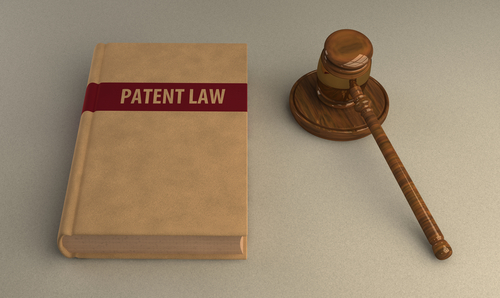The U.S. patent system exists to provide companies with the opportunity to protect their intellectual property and build a healthy revenue model based on that property. When a competing company launches a product in the market that too closely resembles a patented product, the next logical step is to try and get an injunction against the offending company on the grounds that they are violating a patent.
Such injunctions are commonplace in the telecommunications industry as telcos seek to protect their intellectual property. But the dynamic environment can be difficult to understand as so many patents exist and one company’s technology may closely resemble another’s. To help telcos battle the trend, TMC (News - Alert) is offering the Synopsis Under IP/Patents Telecom Sourcing Conference (SUITS). This conference is designed to enable telcos to more readily understand how current and recent legislation affects current and future patents.

Image via Shutterstock
To gain further insight into current patent law, TMC recently spoke with Ross Barton, Patent Attorney at Alston and Bird, LLP. A part of Alston & Bird’s Intellectual Property Litigation Group, Barton focuses on the litigation of complex patent disputes. In fact, Barton was recently named a “Super Lawyer Rising Star” for Intellectual Properties litigation in Virginia and North Carolina. He is coauthor of “Royalty Rate Trends and Valuation in Patent and Technology Licensing,” and is an active member of the Intellectual Property Owners Association.
As the telecommunications industry continues to be one wrought with patent litigation and continuous innovation, there are certain steps telcos should exercise to be better prepared to defend their critical intellectual properties, including the development of an internal system to identify valuable intellectual property during the development stages. Company leaders then need to be fully prepared to complete the patent prosecution process. Barton suggests the implementation of post-grant audits to determine when continuation practice is necessary, or when a broadening reissue is the more appropriate approach.
With the rapid expansion and evolution of patents in the telecom space, there are some in the industry suggesting that this method of protecting intellectual properties is too complex, while others argue it is the best in the world. Despite personal opinion, the patent system does provide a solid foundation for proving ownership and arguing against infringement upon an asset. As trends continue to emerge, however, telcos have to be ready to change with the industry.
As for the biggest trends, Barton shared, “I think that we are seeing issues relating to standard-essential patents pop up more and more, and I think that the complex issues surrounding the assertion of standard-essential patents are going to generate more and more publicity in the coming year or two.”
The current patent wars are drawing attention from all corners of the industry, with several telcos taking note. Whether the war is between telcos or mobile providers, however, the industry is feeling the impact. Plus, the public is more readily engaged in these disputes, especially where mobility is concerned. It’s easy for a consumer to look at the mobile device in their hand and understand the technology at the center of the discussion. This spurs even more interest from consumers – and perhaps even Congress – which could lead to more sophisticated jury pools or even amendments to federal patent laws, according to Barton.
The massive push to move to the cloud could introduce new complications for patent law as the ability to protect cloud-based technology may be more difficult to accomplish. Will technologies in the cloud be patent-able? Will it be easy to discern by those applying patents to the proposed technology? As the cloud continues to mature, Barton believes we will see additional patents address various technological hurdles that emerge with the mainstreaming of this technology.
Regardless, companies will start to want to seek to protect their technology, yet education can at times prove to be an obstacle. For instance, a company may believe that their technology is completely innovative and that what they are doing is fundamentally different from any other product or technology in the market. Even with a patent that covers specific intellectual property rights for that product or technology, a lawsuit can still be waged against the company that can limit production, hurt market positioning and even render the company unable to market its product.
Barton contributed, “This cognitive dissonance is magnified when the patent infringement lawsuit is about some tiny, seemingly obscure aspect of the defendant’s ‘widget.’ For first-time defendants, reconciling these apparent inequities can be difficult, particularly as you face significant legal fees to defend your company.”
To learn more about current patent laws and how they can impact your technology, product or business, register for the SUITS conference. You’ll gain access to the guidelines for analyzing the patent landscape, the IP law and policy changes surrounding the art work, monetizing license rights and so much more.
Want to learn more about patents in the telecom industry? Then be sure to attend Synopsis Under IP/Patents Telecom Sourcing Conference (SUITS), collocated with ITEXPO West 2012 taking place Oct. 2-5, in Austin, TX. Stay in touch with everything happening at SUITS. Follow us on Twitter.
Edited by Brooke Neuman
